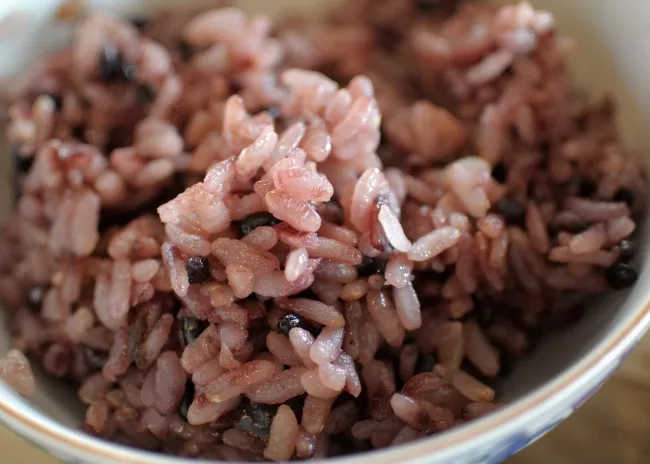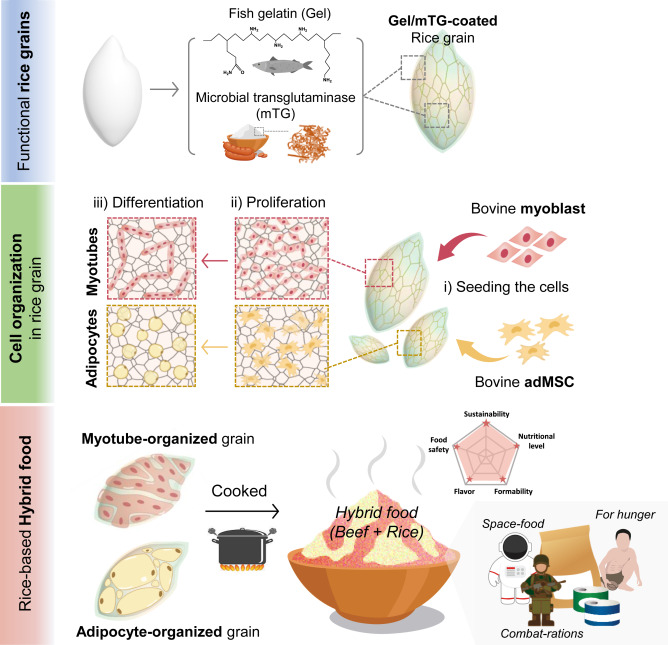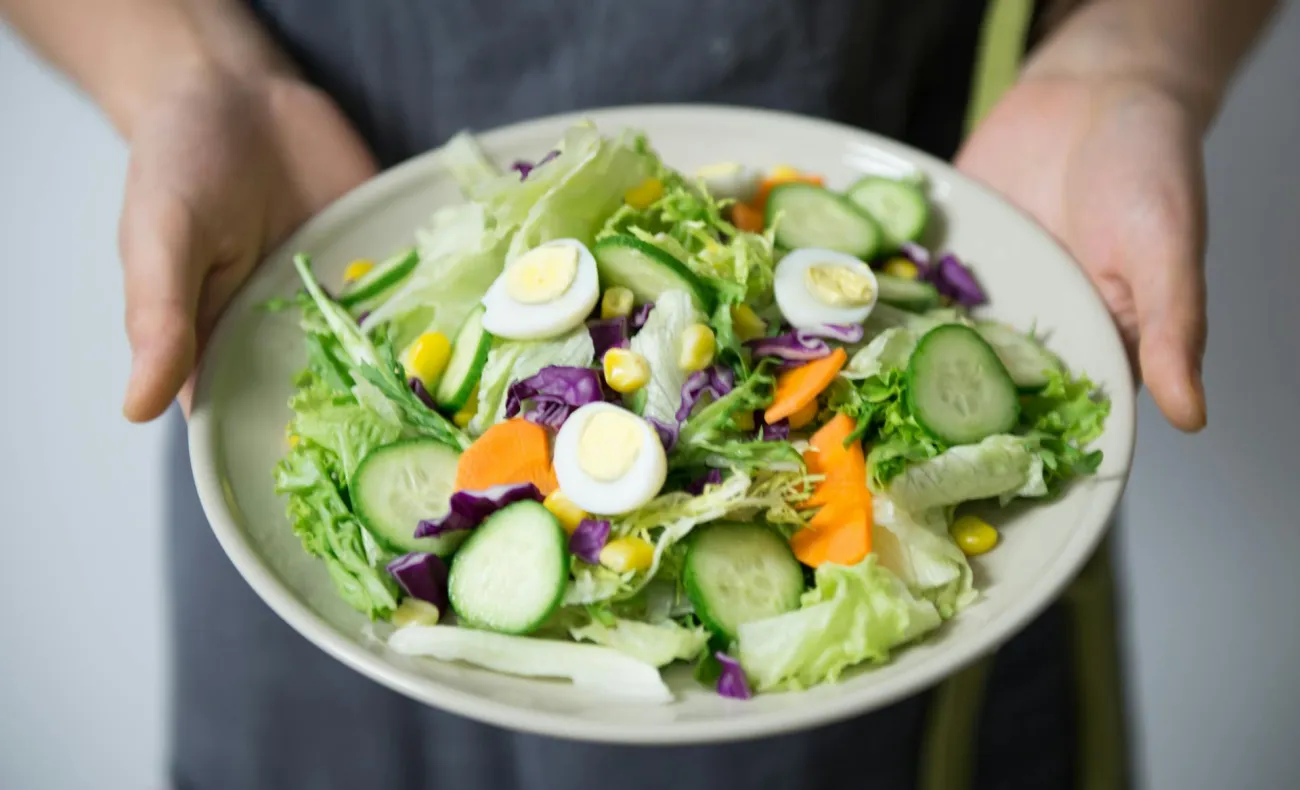A new study has combined rice grains and animal nutrients using cow cells to produce a hybrid food or “rice-based meat”. The authors contribute to a growing area of future food research exploring scaffolding technology for cell-cultured meat products and suggest rice as an alternative scaffold to more common soy or nut-based scaffolds.

Summary
A new study has combined rice grains, a fish gelatin coating and animal derived cells to produce a hybrid food or “rice-based meat”. The authors contribute to a growing area of future food research exploring scaffolding technology for cell-cultured meat products. They suggest rice as a novel alternative scaffold with fewer allergen concerns to more common soy or nut-based scaffolds.
To produce this hybrid food, the researchers coated rice grains in an edible fish gelatin to encourage and strengthen cell binding during the cell culture process. Two types of “rice-based meat” were produced by introducing cow muscle cells (bovine myoblasts) and fat cells (adipose tissue-derived stem cells) respectively, to form organised cell structures. The authors claim these novel foods hold potential as a nutrient dense and practical food. The synthesis process of the two rice-based meats is visualised in Figure 1.

Figure 1: A diagram of the process to synthesis the hybrid rice-based meat using bovine cells and fish gelatin coated rice scaffolds
After successfully synthesising these cells, the researchers conducted a texture analysis and found the addition of animal cells affected the texture of the hybrid rice. Compared with plain steamed rice they found the texture to be less characteristically sticky due to a reduction in the elongation of starch chains of the hybrid rice. The texture of the rice-based meat was more brittle and hard. Additionally, they conducted an odour analysis and found that the different hybrid rice grains (muscular myotube and fatty adipocyte) had distinct odours associated with beef and cream or butter respectively.
The researchers also discussed the nutrient profile of the “hybrid rice” (a mixture of the two cell type grains), noting that eating 100g of hybrid rice would be equivalent to the protein content of 100g of plain rice and 1g of beef brisket. There were small increases in the carbohydrate and fat content of the hybrid rice compared to plain rice. Results of the nutrient analysis can be seen in Figure 2. The authors note the relatively small increase in fat compared to the other nutrients could be connected to technological issues of encouraging cow stem cells to differentiate into adipose fat cells. This analysis was done by weight but due to the additional cells in the hybrid rice, there may have been fewer hybrid rice grains compared to the plain rice in the 100g analysis. No micronutrient analysis was conducted by the researchers.

Figure 2: Nutritional value of hybrid rice compared to steamed rice showing small increases carbohydrates, protein and fat contents.
Whilst the researchers have successfully produced a hybrid food and demonstrated that rice can serve as a 3D scaffold for cell-cultured meat proliferation and differentiation, the researchers did not provide sufficient discussion to substantiate their claims that this food item can “overcome humanity’s food crisis.” The role that cell-based meat could or should play in a future food system is still contested, and relies on significant advances in cell culture media and bioreactor technology. The authors also make assumptions related to potential carbon emission reductions associated with cell-based meat compared to animal derived meat products which one recent research study has suggested are not guaranteed since they depend on clean energy availability. These potential reductions rely on renewable energy sources and the assumption that conventional livestock production would be replaced by these alternative meat products. They also do not address ethical and practical issues associated with the use and procurement of fetal bovine cells.
The researchers position their findings within the developing field of cell-culture meat products and suggest rice as a novel scaffold for the proliferation and differentiation of animal derived cells. They suggest rice has a lower potential allergenicity than other scaffolds like soy and nuts and note the healthy nutrient profile of rice in addition to its scaffold potential.
Abstract
A strategy to develop a nutrient-rich hybrid food using rice grains functionalized with nanocoating and bovine cells for a sustainable food system is reported. Rice grains are safe food ingredients with a low incidence of allergy and have a nutritional profile and structure suited for 3D cell culture. An edible coating composed of fish gelatin and food enzymes offers a high affinity between rice grains and cells and improves the structural stability of grains for increased cell capacity. The potential of rice grains scale scaffolds is demonstrated by investigating the interactions between the coating, grains, and cells. The rice grains are transformed into a hybrid food with animal nutrients by containing organized bovine cells. We discuss the food properties and production value of this rice-based meat to evaluate its potential as a sustainable food that guarantees safety from food crises and global warming.
Reference
Park, S., Lee, M., Jung, S., Lee, H., Choi, B., Choi, M., Lee, J.M., Yoo, K.H., Han, D., Lee, S.T., Koh, W.-G., Bang, G., Hwang, H., Lee, S., Hong, J., 2024. Rice grains integrated with animal cells: A shortcut to a sustainable food system. Matter.
Lynch, J., Pierrehumbert, R., 2019. Climate Impacts of Cultured Meat and Beef Cattle. Frontiers in Sustainable Food Systems, 3.
Read more here and see our explainers on Meat, metrics and mindsets and What is ecomodernism?




Comments (0)